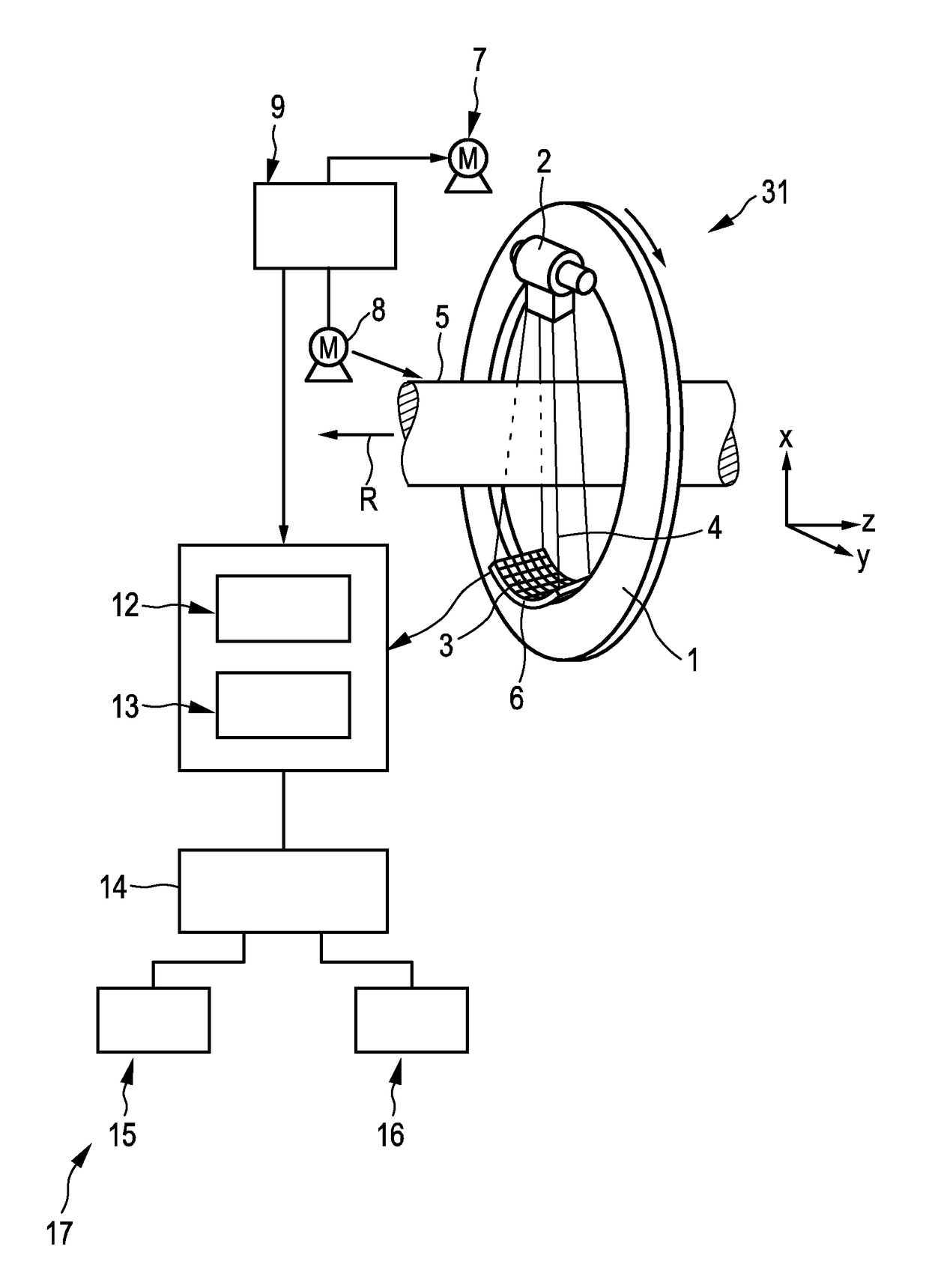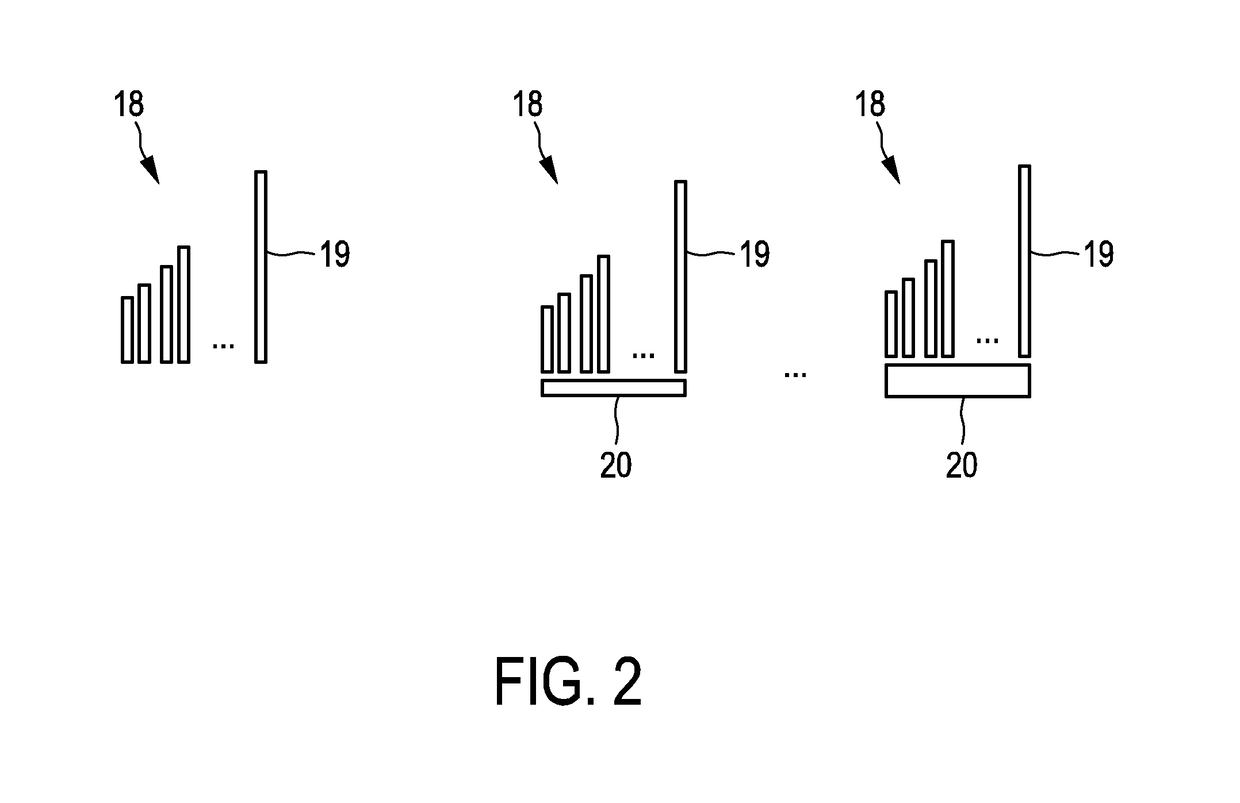Correcting photon counts in a photon counting x-ray radiation detection system
a radiation detection system and photon counting technology, applied in the field of photon counting x-ray radiation detection system and method, can solve the problems of ring artifacts in the image with time dependent strength, degrading to the quality of generated, etc., and achieve the effect of improving the determination of photon counts
- Summary
- Abstract
- Description
- Claims
- Application Information
AI Technical Summary
Benefits of technology
Problems solved by technology
Method used
Image
Examples
Embodiment Construction
[0047]FIG. 1 shows schematically and exemplarily an embodiment of an x-ray imaging system, here, a spectrally resolving computed tomography system for generating an image of an object. The spectrally resolving computed tomography system 17 includes a support 1 which is capable of rotating about a rotational axis R which extends parallel to the z direction. An x-ray radiation device 2, which comprises an x-ray tube and which is adapted to provide polychromatic x-ray radiation 4 for traversing an examination zone 5 of the spectrally resolving computed tomography system 17 during a detection period of a scan, is mounted on the support 1. In this embodiment, the x-ray radiation device 2 is adapted to provide a conical x-ray radiation beam 4 as the polychromatic x-ray radiation. In another embodiment, the x-ray radiation device 2 can be adapted to provide the polychromatic x-ray radiation with another beam shape, for instance, with a fan beam shape. The x-ray radiation 4 traverses an obj...
PUM
 Login to view more
Login to view more Abstract
Description
Claims
Application Information
 Login to view more
Login to view more - R&D Engineer
- R&D Manager
- IP Professional
- Industry Leading Data Capabilities
- Powerful AI technology
- Patent DNA Extraction
Browse by: Latest US Patents, China's latest patents, Technical Efficacy Thesaurus, Application Domain, Technology Topic.
© 2024 PatSnap. All rights reserved.Legal|Privacy policy|Modern Slavery Act Transparency Statement|Sitemap



